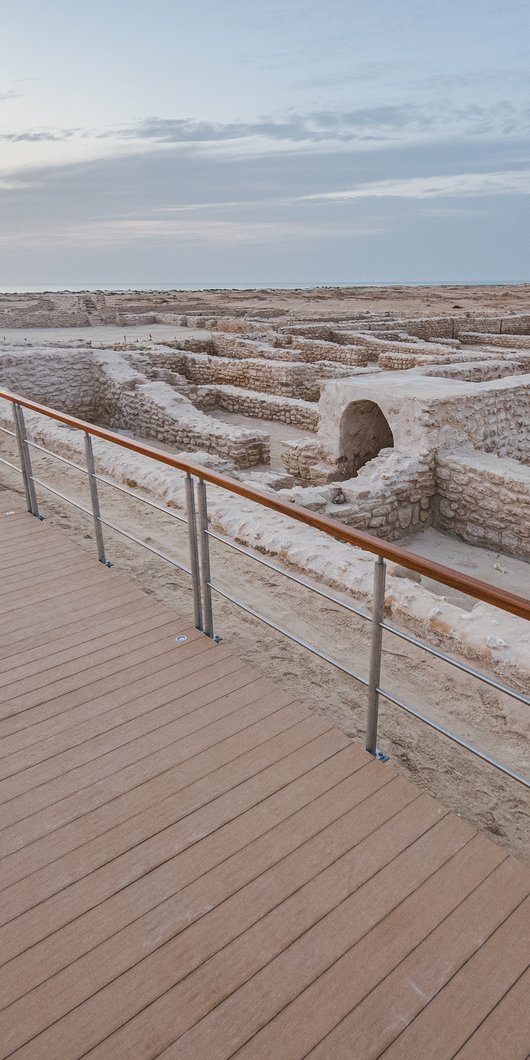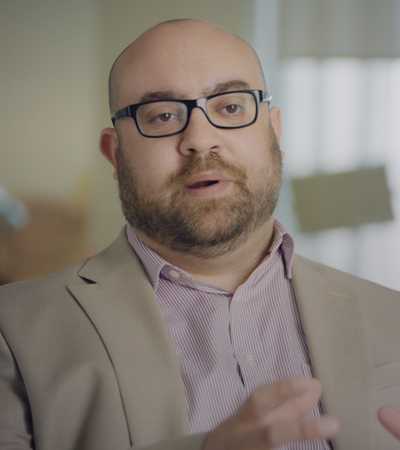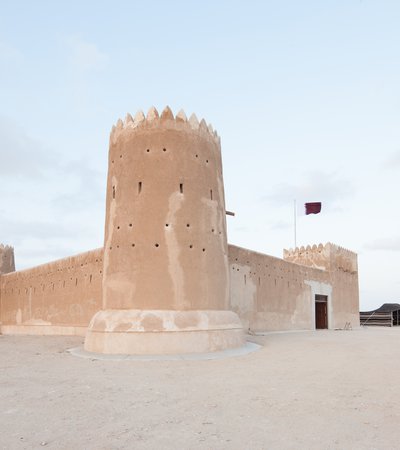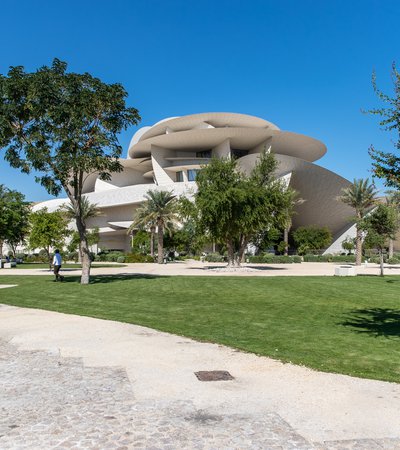ICOMOS defines climate change as ‘one of the most significant and fastest growing threats to people and their cultural heritage worldwide’. Dr Fatema Al Sulaiti, Qatar Museums’ Director of International Cooperation, is a highly experienced art historian, specialising in Islamic art and architecture. She is also Qatar’s representative to theUnited Nations Educational, Scientific and Cultural Organization (UNESCO), where she is responsible for representing, implementing and evaluating policy reform and international programmes related to culture and museums.
We speak to Dr Al Sulaiti about the challenges ahead. The following interview has been edited for length and clarity.
DROUGHT AND OTHER CLIMATE CHANGE IMPACTS ARE UNDERMINING ARCHAEOLOGISTS' ABILITIES TO PROTECT IMPORTANT SITES BEFORE THEY DEGRADE – DOES THIS MATCH YOUR EXPERIENCE IN QATAR?
Climate change poses increasingly formidable challenges to all humankind and is one of the most pressing global environmental problems. Today, the focus is on strategies for mitigation and adaptation, involving national action and international cooperation.
The challenge of decarbonisation is the key pillar of the response to climate change. It is also a major force that will change the power and influence on a world level. Qatar is especially threatened by sea-level rise, yet we are accustomed to the challenges and potential benefits of decarbonisation.
The Qatar National Vision 2030 names Environmental Development as one of its four main pillars, aiming to manage the climate change crisis on the country level. And at the UN Climate Action Summit 2019, His Highness the Emir of Qatar stated, "The phenomenon of climate change is undoubtedly one of the most serious challenges of our time.”
WHAT CONSERVATION TOOLS DOES QM USE REGULARLY TO COMBAT THE EFFECTS OF CLIMATE CHANGE SPECIFICALLY?
Qatar Museums knows the power of preserving cultural heritage to build a better world, which includes documentation and cultural heritage information management. Doing this work will create sustainable cultural heritage for generations to come.
HOW DID PREVIOUS GENERATIONS OF PEOPLE IN QATAR REPAIR, REUSE AND RECYCLE AS PART OF THEIR NATURAL COURSE OF LIFE?
There is evidence that the mantra of ‘repair, reuse, recycle’ is not new in the Qatari community, or in the world, but one that has been around since our ancestors.
For example, there is clear evidence from the Al Zubarah UNESCO World Heritage site of early recycling of wood and metal and that wreckage from boats and ships were used for doors and house portals. Evidence of the recycling of pottery and animal skin leather also has been found.
HOW CAN CULTURAL HERITAGE CONSERVATION DRIVE CLIMATE ACTION?
The wave of globalisation has resulted in the steady erosion of national identities and local cultures. Regarding the built environment, cultural standardisation has created homogeneous urban landscapes that bear little relation to regional contextual specificities. Preserving climate responsive buildings is important – and historic buildings are already more climate friendly.
First, they employ passive design techniques such as optimal solar orientation, compactness and room layouts, as well as high insulation envelopes, right window sizing and locations, courtyards and other perfected building practices. These techniques reduced energy demand and improved indoor air quality and personal health using natural daylight, ventilation, and other naturally renewable resources.
As a result, traditional architecture is low-impact and energy-efficient and retrofitting these buildings with new uses can better position cities to achieve sustainable urban environments. Incubating local traditions and values — for example, traditional architecture — addresses much more than physical form. It embodies a complex web of communal meanings, values, beliefs, practices and traditions that have been cherished by many and passed on across generations.
With that in mind, recent best practices involve regenerating and converting these historic districts into areas where local cultural practices can be incubated, disseminated and even developed. Examples of cultural activities and programmes include arts, crafts, food products and culinary culture, theatre and performance, music and visual arts, etc.
The preservation of historically significant districts can serve to bond communities together by evoking a feeling of shared lineage and destiny. Not only does heritage ensconce a sense of belonging to societies, but it also evokes common identity, one that is uniquely theirs. This stimulates in individuals a sensation of pride, rootedness, and ownership that positively affects people’s overall well-being and health. Finally, heritage helps societies to hand on their values and beliefs to future generations, solidifying intergenerational connection.
HOW DO LOCAL AND TRADITIONAL KNOWLEDGE SYSTEMS CONTRIBUTE TO THE DEVELOPING VIABLE CLIMATE ADAPTATION MEASURES?
Indigenous knowledge and local knowledge are inherently valuable but have only recently begun to be appreciated. In the past these often endangered ways of knowing have been suppressed or attacked. Yet these knowledge systems represent a range of cultural practices, wisdom, traditions and ways of knowing the world that provide accurate and useful climate change information, observations and solutions.
Rooted in their own contextual and relative embedded locations, some of this knowledge represents unbroken engagement with the Earth, nature and weather for many tens of thousands of years, with an understanding of the ecosystem and climatic changes over longer-term timescales that is held both as knowledge by Native peoples and local peoples, as well as in the archaeological record.
WHAT ACTIONS ARE THE ICOMOS NATIONAL COMMITTEES, INTERNATIONAL SCIENTIFIC COMMITTEES, WORKING GROUPS, AND TASK FORCES TAKING IN RESPONSE TO THE INCREASING RISKS AND IMPACTS OF CLIMATE CHANGE?
The main objectives of the initiative led by these advisory bodies to the World Heritage Convention (ICCROM, ICOMOS, IUCN) are to build awareness of rights issues in World Heritage and heritage management in general, to promote ‘good practice’ approaches and to develop and promote relevant tools and guidelines, through conservation and management of the sites.
ICOMOS embraces a two-pronged approach to the issue that emphasises both responding to the risks that climate change poses to cultural heritage and also championing heritage as a source of resilience and an asset to climate action, whose potential is unlocked through better conservation and management of the world’s tangible and intangible cultural resources.
Visit UNESCO World Heritage Al Zubarah Archaeological Site to see QM's conservation work in action.
Margaux Montserrat De Pauw is the Senior Heritage Activation Programming Coordinator at NMOQ and Reem Shaddad is the Senior English Digital Editorial Specialist at QM.



